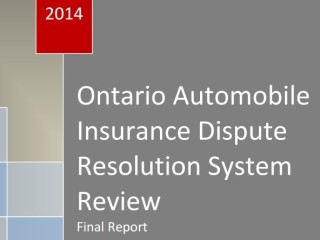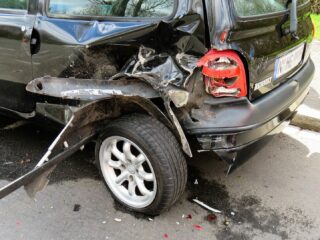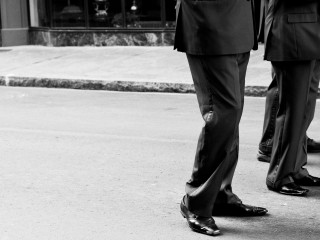Duty of insurer to defend or indemnify
Released March 23, 2017 | Full Decision [CanLII]
This was an application brought by Coachman Insurance Company (“Coachman”) for an order under Rule 14.05(3)(d) of the Rules of Civil Procedure to declare that it does not owe a duty to defend or indemnify the Respondent Barry Kelley under the provisions of its homeowner’s policy. The court found that Coachman had a duty to defend but could not make a determination on whether there was a duty to indemnify.
The action arose when David Kraft was rendered a partial paraplegic as a result of a single vehicle accident on October 31, 2009 involving an ATV. David Kraft alleges that the accident was caused by Mr. Kelley’s negligence. At the time of the accident, Mr. Kelley was insured under a homeowner’s policy issued by Coachman. The allegations in the Statement of Claim included that Mr. Kelley, though a passenger on the ATV had caused the ATV to flip over, resulting in injury to Mr. Kraft.
Coachman took the position that it was not obliged to defend or indemnify Mr. Kelley in relation to the action because the alle tions outlined in the Statement of Claim fell outside the scope of the policy’s coverage. More specifically, that one of the policy’s exemptions included any “claims due to a motorized vehicle or trailer that you own or use”. The policy expressly included ATVs as “motorized vehicles”. Mr. Kraft stated that the allegations of liability against Mr. Kelley fell within the policy’s scope of coverage and that the “motorized vehicle” exclusion did not apply.
At the time of the accident, Mr. Kraft was an insured under a standard Ontario automobile insurance policy with an associated OPCF 44R family protection endorsement issued by McKillop Insurance Company. McKillop was granted leave to intervene in the application on consent of all the parties.
The court outlined the test to trigger the insurer’s duty to indemnity as a three-step process:
- The court must determine which of the plaintiff’s legal allegations are properly pleaded. In doing so, the court is not bound to accept the legal labels chosen by the plainti . Instead the court must examine the substance of the allegations contained in the pleadings. This exercise does not involve a consideration of the merit of the claims asserted but rather an evaluation of their “true nature”.
- The court should then determine whether any of the claims are entirely derivative in nature; and
- The court must then decide whether any of the properly pleaded non-derivative claims trigger the insurer’s duty to defend.
Whereas, the legal test to determine whether an insurer has a duty to defend is triggered when a “mere possibility exists” that a pleaded claim falls within the scope of the relevant policy of insurance. Where it is clear that the pleaded claim falls outside the policy, either because it does not come within the initial grant of coverage or it is otherwise excluded by operation of an exclusion clause, the duty to defend is not engaged.
After reviewing the allegations in the statement of claim, the court ruled that Coachman owed a duty to defend Mr. Kelley in the ac on. However, it found that a determination of whether Coachman was obliged to provide indemnity under the policy was premature. This determination was premature because it hinged on relevant findings of fact which needed to be made first.
In its analysis on whether Coachman owed a duty to defend, the court looked at the language of the policy.
The court found that the policy’s “motorized vehicle” exclusion was ambiguous for two reasons:
- the requisite causal connection between the bodily injury for which compensation is claimed and fault or negligence of the insured in the ownership and/or use of a motorized vehicle;
- the nature and extent of the activities that constitute an insured’s “use” of a motorized vehicle within the meaning of the exclusion.
In resolving the ambiguity, the court chose to narrowly construe the exclusion. The court found that exclusion of coverage for claims “due to” a motorized vehicle that the insured “uses” is intended to apply when the insured’s negligence giving rise to lia lity is founded in an act or omission in which the insured exercises “some form of control over” a motorized vehicle and that conduct causes “bodily injury” or “property damage”.
The allegations of negligence against Mr. Kelley could be categorized as follows:
- negligent manner in which Mr. Kelley interacted with the ATV causing it to flip over;
- negligent manner in which he interacted with Mr. Kraft during and after the ATV flipped over; and
- general allegations of negligent conduct which may have contributed to (1) or (2).
The court found that under the first category, Mr. Kelley exercised some form of control over the ATV, which in turn was one of the causes of Mr. Kraft’s injuries. Therefore, the allegations included in the first category constitute “claims due to a ‘motorized vehicle’ used by Mr. Kelley” within the meaning of the subject exclusion.
With respect to the substance of the allegations of liability under the second category, the allegations were not dependent on the term “use” of the ATV. The court found that the exclusion clause did not expressly indicate that it applies to claims resulting from concurrent causes. As a result, if the insurer wished to exclude any and all coverage under the policy where concurrent with a covered cause, the claims was “due to a” motorized vehicle used by the insured. This language was found in other parts of the policy. Accordingly, the court found that the second category of allegations of negligence were not subject to the exclusionary provision.
The court found the same principle to apply for the third category of negligence allegations. Accordingly, the court ruled that Coachman had a duty to defend Mr. Kelley in the action.
Read the full decision on CanLII









